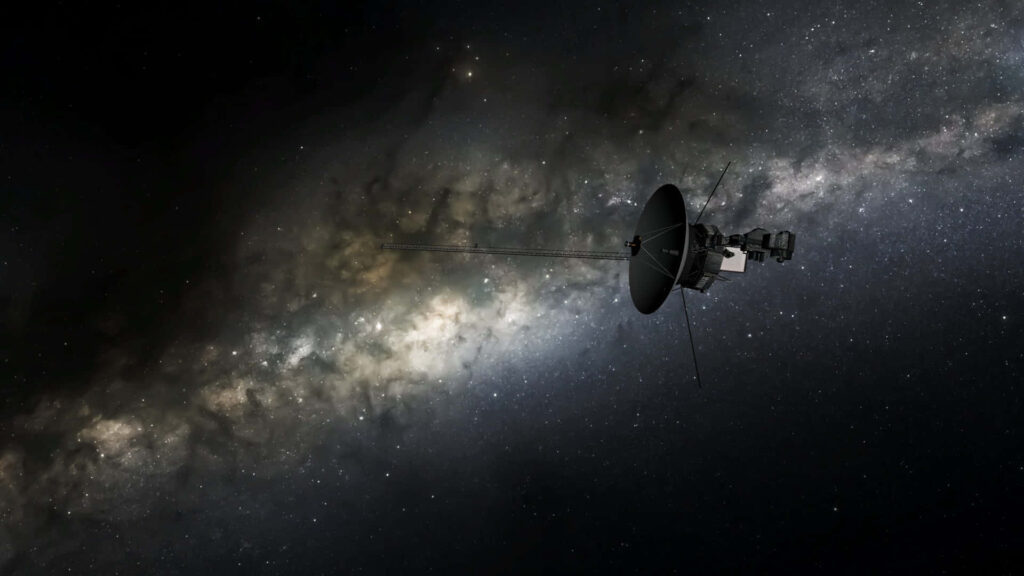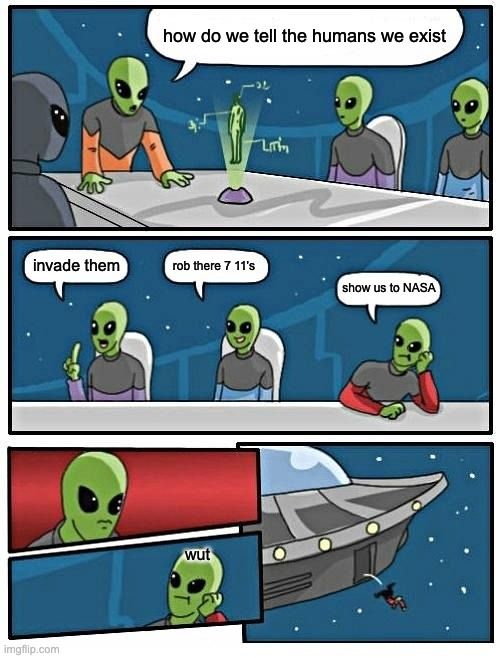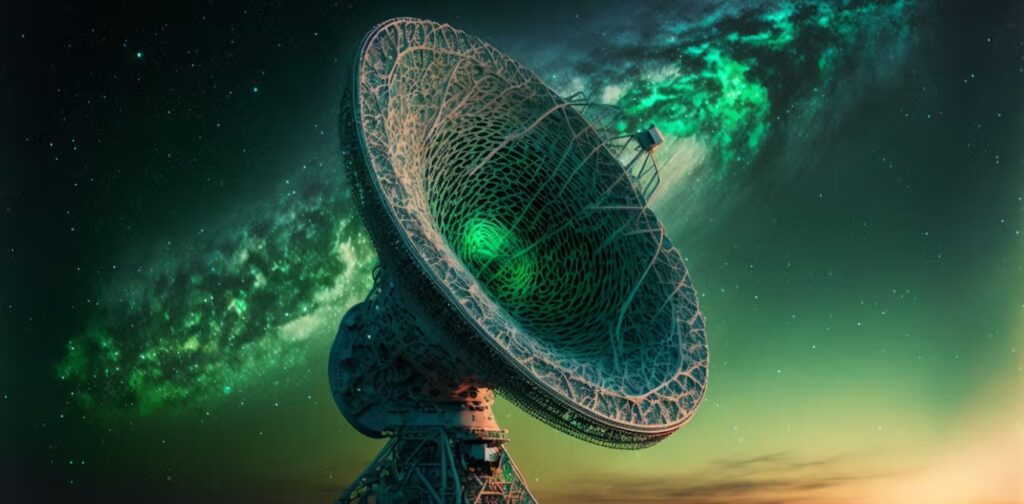For decades, humanity has been asking, “What can aliens do for us?” But perhaps the better question is, “What can we do for aliens?” While we’ve been busy scanning the skies for any signs of extraterrestrial life, we haven’t really given much thought to what we’d say to them if they showed up on our doorstep. Well, we’ve actually sent a few things their way already, but what should we be sending? What messages would truly represent who we are?
Voyager: Humanity’s Cosmic Message in a Bottle
One of the most famous attempts to communicate with extraterrestrial life came in the 1970s when NASA launched the Voyager missions. These weren’t just space probes designed to explore the outer planets—although the images they sent back of Jupiter, Saturn, Uranus, and Neptune were jaw-dropping. Those photos were enough to inspire an entire generation of space enthusiasts. For instance, my own fascination with space started when I saw those stunning images of Neptune as a kid. That deep blue planet, with its dark storm systems swirling like a cosmic tempest, captured my imagination like nothing else.
But back to the main point: along with the incredible planetary flybys, the Voyager missions carried something even more exciting—a message to the stars. Carl Sagan, the visionary behind the project, suggested that if we’re sending probes beyond our solar system, why not send a message too? Thus, the Golden Record was born, a “cosmic message in a bottle” designed to last for 500 million years. Even if humanity is long gone, there’s a chance that someday, aliens might stumble upon these records and learn that Earth once had an intelligent (or at least self-aware) civilization.
What’s on the Golden Record?
So, what do you send to represent an entire species? Not tomorrow’s weather forecast, that’s for sure. Instead, the creators of the Golden Record aimed to compile the most universal aspects of life on Earth. They included the sounds of nature—like birdsong and thunderstorms—as well as music, ranging from Bach to traditional songs from indigenous cultures around the world. There are even images, such as a highway, which I guess is our way of saying, “Hey, aliens, we’ve got roads!”
The record also contains diagrams, like a map of our solar system and the location of Earth relative to distant pulsars in the Milky Way, just in case the aliens want to drop by. Sagan and his team made sure to include instructions on how to play the record, which is made of durable materials like gold-coated aluminum, to survive the harsh conditions of space. It’s a pretty neat idea: a time capsule that could outlast us by eons, quietly floating through the galaxy, waiting to be discovered.

Our Place in the Universe
One of the most profound moments of the Voyager mission came when Sagan had the brilliant idea to turn Voyager 1 around and take one final photograph of Earth from the edge of our solar system. The result was the iconic “Pale Blue Dot” image—Earth, barely visible as a tiny speck in the vastness of space. It’s a humbling picture, reminding us of just how small and fragile our home is in the grand scheme of the cosmos.
This image, like the Golden Record, isn’t just a message to aliens; it’s a message to ourselves. It says, “This is it. This is all we have.” It’s a reminder that while we search for life beyond Earth, we should also take care of the life we have here.
Sending Radio Messages to the Stars
Before Voyager, we tried something a bit different. In 1974, astronomers sent the “Arecibo Message” toward the M13 star cluster, about 25,000 light-years away. This radio signal, transmitted from the Arecibo Observatory in Puerto Rico, was a binary-coded message packed with information about humanity, including our numbering system, the structure of DNA, and even a pictogram of a human.
The hope was that if there were any intelligent civilizations out there, they’d receive the message and be able to decipher it. Of course, with the distance involved, we won’t hear back for at least 50,000 years—if anyone responds at all. Still, it’s a bold move, kind of like sending a cosmic business card and hoping the recipient knows how to use it.
Are We Speaking the Right Language?
One problem with these attempts to communicate is that we assume aliens will think like us. But what if they don’t? The Arecibo Message, for example, was so cryptic that even some of the smartest scientists on Earth had trouble figuring it out. If humans can’t decode it, what hope do aliens have? That said, there’s always the chance that extraterrestrial life operates on entirely different principles, using senses and communication methods we can’t even imagine. So maybe we shouldn’t be sending music or binary codes, but something more universal—whatever that might be.
Should We Even Be Trying to Talk to Aliens?
 As exciting as the idea of contacting aliens is, there are some who argue that it might be better to lay low. After all, history has shown that when advanced civilizations meet less advanced ones, it doesn’t usually end well for the latter. The same could happen if we broadcast our location to the galaxy. What if we attract the attention of malevolent extraterrestrials who see us as nothing more than a resource to exploit?
As exciting as the idea of contacting aliens is, there are some who argue that it might be better to lay low. After all, history has shown that when advanced civilizations meet less advanced ones, it doesn’t usually end well for the latter. The same could happen if we broadcast our location to the galaxy. What if we attract the attention of malevolent extraterrestrials who see us as nothing more than a resource to exploit?
On the flip side, some believe that if aliens can travel across the stars, they’d likely be beyond petty conquest and more interested in knowledge-sharing. Optimists hope that a potential meeting with aliens could result in a galactic exchange of ideas and cultures.
So, what should we send out into space next? Some suggest we keep it simple—just a series of symmetrical radio signals that would be hard to explain as anything but artificial. Others think we should go all out and send something truly representative of humanity—our achievements, our failures, our art, and maybe a few cat videos (because why not?).
The truth is, there’s no perfect answer. We don’t know how aliens think or what they value. But what we do know is that the attempt to communicate with them reflects something beautiful about humanity: our curiosity. Even if we never hear back, the act of sending out these messages says something about who we are. We want to know if we’re alone, and we’re willing to shout into the void, just in case someone is listening.
The Great Galactic Hide and Seek
Here’s a thought: what if the galaxy is full of intelligent civilizations, but everyone is too busy listening to send out signals? It’s like a cosmic game of hide and seek, where everyone is waiting for someone else to make the first move. Maybe, in the end, we need to be bold and start a conversation. After all, the worst that can happen is… well, let’s not think about that.
In the end, whether we should send signals to aliens or not comes down to one big question: Do we want to be found? If the answer is yes, then we need to figure out what we’re going to say. And if the answer is no, maybe it’s best to sit quietly and listen. Either way, the search for extraterrestrial life isn’t just about them—it’s about us. It’s a mirror reflecting our deepest hopes and fears, and perhaps that’s the most alien thing of all.
So, what would you send to the aliens? Let us know in the comments below!



